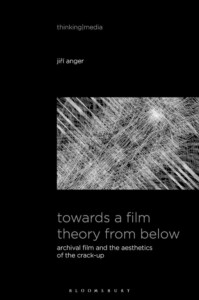 Operating between film theory, media philosophy, archival practice, and audiovisual research, Jiří Anger focuses on the relationship between figuration and materiality in early films, experimental found footage cinema, and video essays.
Operating between film theory, media philosophy, archival practice, and audiovisual research, Jiří Anger focuses on the relationship between figuration and materiality in early films, experimental found footage cinema, and video essays.
Building on his theoretical as well as practical experience with the recently digitized corpus of the first Czech films, created by Jan Kříženecký between 1898 and 1911, the author demonstrates how technological defects and accidents in archival films shape their aesthetic function and our understanding of the materiality of film in the digital age. The specific clashes between the figurative and material spheres are understood through the concept of a “crack-up.” This term, developed by Francis Scott Fitzgerald and theoretically reimagined by Gilles Deleuze, allows us to capture the convoluted relationship between figuration and materiality as inherent to the medium of film, containing negativity and productivity, difference and simultaneity, contingency and fate, at the same time, even within the tiniest cinematic units.


